
OCCUPATION
| Six impatient months as an occupation garrison
followed hard upon the winning of the war in Europe. New duties and policies
carried out the denazification of the Reich and controlled the economies of defeated
Germany. A vast horde of Displaced Persons became the immediate No. 1 problem. |
| In Kaufbeuren, Mindelheim, Blaubeuren, Geislingen
and Goppingen - toy-like 15th Century towns - through their quiet twisting streets, and in
the lush green countrysides that encircled them, grumbling GI's went about their routine
tasks with loud-voiced aversion and a prolonged hankering for home. Even in the wake of
victory, before Cassino, the Vosges and the Siegfried Line could be forgotten, the combat
soldier deplored his figurative countryclub existence and the static duties of occupation. |
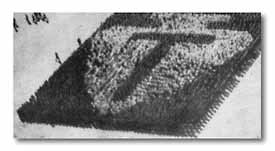
| Four Battalions form the T-Patch on Salerno Day. |
|
|
The Army and the Red Cross offered
some compensation to appease him. In less than a month towns like Geislingen were
transformed into would-be replicas. of Kalamazoo. Clean German homes became his billet;
the most impressive structure in town, his ARC club; the village fuszball (soccer) platz,
his diamond and gridiron; the local cinu, his nightly theater. Unit publications provided
him with a morning newspaper; the PX became his corner drugstore.
| Special Service brought such creditable
entertainers as Ingrid Bergman, Raymond Massey, Jack Benny, Martha Tilton, and Shep Fields
to alleviate the monotony of humdrum evenings. Nearly everyone had a chance at a summer
tour: the Riviera, Switzerland, Brussels, London or Paris. If he wanted to go to school,
the Information and Education Section informed him of the Army's learning centers at
Biarritz, the Sorborme, Shrivenham, and at Cambridge. But more than anything the average Joe wanted to go home.
|
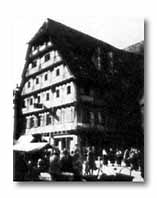
| Old landmark, Geislingen. |
|
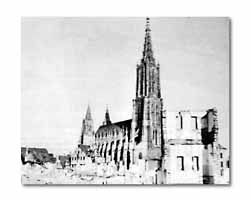
| In shattered Ulm the world's tallest cathedral spire stood
serene. |
|
Throughout the six months there were a lot
of them who did go home. Six days after V-E Day, a happy five-hundred high pointers left
the Division, flying home on the famous Green Project. By July, fifteen hundred more had
departed. Before V-J Day the Division had been listed as a part of the permanent
occupation force and an exchange of personnel with the 63rd Infantry and the 12th Armored
Division took place to start old-timers on their way. The end of the war brought a change
of category and alerted the 36th for shipment home. Wholesale shifting of troops from one
division to another accompanied redeployment preparations, not once but several times.
There were many delays, all of them in turn sorrowfully lamented by the waiting men, and
by "T-Patch," the Division newspaper. |
Two celebrations of especial
significance occurred during the occupation period: the August 15 anniversary ceremony at
San Raphael, France, in which high French and American officials participated, dedicating
a memorial to the Green Beach invasion; the Salerno Day festival, Septemer 9.
By the first of December elements of the 36th had
set sail from Marseilles bound for Wonderland. First unit debarkation on the Division's
greatest D-Day followed on December 14. Beachheads at Hampton Roads and New York were
established with little difficulty.
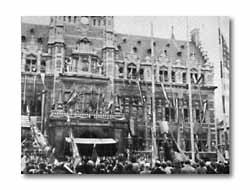
| BRUSSELS. Americans found bilingual Brussels (French and Flemish) an exciting and charming
city, compared it favorably with Paris. |
|
|
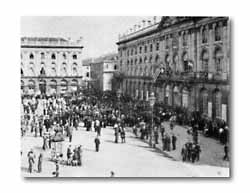
| NANCY. Closer to the front than either Paris or Brussels, a stay at the Nancy Camp
afforded the advantage of a large city and real rest. Both VI and XV Corps established rest
centers there. |
|
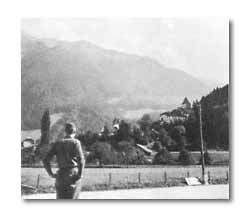 |
|
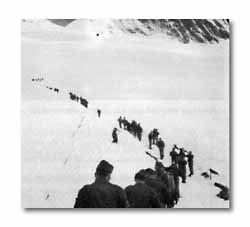 |
| SWITZERLAND.
At the war's end when Switzerland's neutrality could not longer
be violated, tours of the country for American soldiers were begun. On this trip GI's paid
35 dollars, had to take whatever itinerary was planned. Soldiers were charmed by the Alps
and the snow. They liked the orderliness of the cities and the curious gifts they
purchased, and they liked the winter sports. |
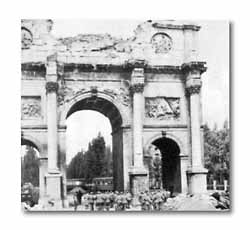
| MUNICH. A group of 36th Division men tour Munich, cradle city of Nazidom. In photo they
view the rubbled Siegestur, built by King Ludwig I, 1844-1852. |
|
|
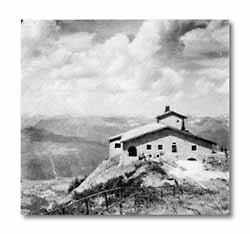
| BERCHTESOADEN. On the patio of Hitler's "Eagle's Nest" high above Berchtesgaden in the
Bavarian Alps, American soldiers survey the magnificent view of surrounding countryside. |
|
|









